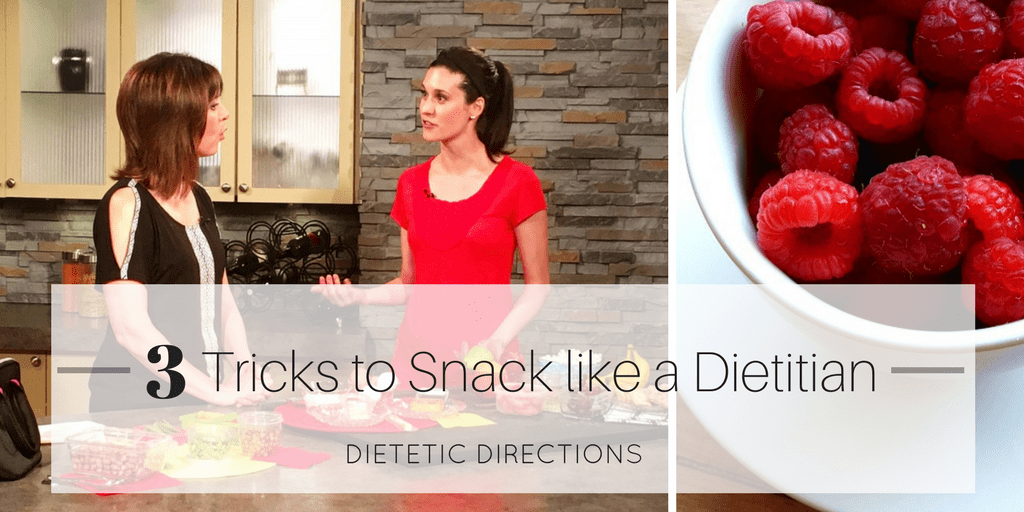
3 Tricks to Snack like a Dietitian
Have you mastered the art of snacking? Do you feel in control of the foods you choose and the amounts you eat? Or do you snack by default or merely on what’s available?
Today, I will share my top three tips to snack like a dietitian (click here for dietitian vs. nutritionist vs. holistic nutritionist). The purpose of snacking is to allow you to feel full longer, make healthy choices and benefit from convenient and tasty options.
Click here for your free download of Dietetic Directions’ Power Snacks Guide.
Find out how to snack like a dietitian! Share on XTip #1: Timing is Everything!
When planning snacks, it is crucial to get the timing right. The challenge with snacking is that you first need to get in touch with your body’s hunger signals (aka intuitive eating). This way you will be able to distinguish between hunger versus appetite.
As a rule of thumb, I recommend clients aim for three meals a day and choose a snack when needed. A snack is usually necessary when you are moderately hungry, or around a 7.5 to 8.5 out of 10 –where 10 is ravenous or light-headed. If you come home from work STARVING, you would benefit from a power snack a couple of hours before dinner.
Tip #2: Choose Satisfying Snacks with Intention
Next step to snacking like a pro is to know what types of foods (or combination of foods) will fill you up! In order to balance snacks for fullness, you want to pack a “one-two punch”.
- Choose a fibre-containing carbohydrate since these are your body’s preferred source of energy and slow digestion, which means you feel full longer. Hooray! If you find yourself fearing carbohydrates, read my post entitled, “In Defence of Carbs: Stop the Carb Hating”.
Examples: Medium fruit (apple, pear, peach), 2 whole grain wasa crackers, ½ cup berries, ½ an avocado or edamame beans etc.
2. Pair your fibre-containing carb with a protein to slow the release of the carb’s sugar into your blood stream, which allows you to feel full for longer.
Examples: Apple plus 1/4 cup almonds, wasa crackers plus hummus, fresh berries plus Greek yogurt, avocado plus hard boiled egg, roasted chickpeas etc.
Tip #3: Make it Convenient
To make your savvy snack fit your busy lifestyle we need to make it convenient! After all, dietitians do not leave it up to chance that there might be a healthy snack; we try our best to plan ahead. This way healthy eating is more likely to happen.
In order to make healthy options handy, try packing them the night before. You may also want to have “emergency snacks” packed in your car or office to guard against grabbing “less nutritious” alternatives.
Bottom Line:
Snacking is a powerful tool to optimize fullness between meals and preventing over-eating. Start by listening to your body to know when you need a snack. You also might find that your body doesn’t even need a snack at all, but perhaps you need a nap or a walk outside! Next, choose balanced snacks to maximize fullness and be sure to make them convenient! Finally, if you are uncertain of snack portion sizes or finding yourself feeling hungry, speak with a dietitian.
Ps. Download your FREE Power Snack Guide here.




